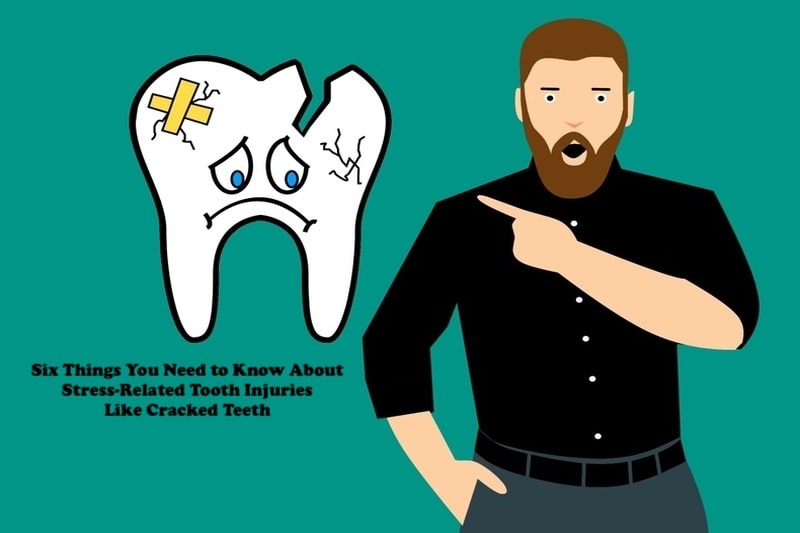
The end of summer can be a stressful time for families, when vacations and easygoing routines give way to busier schedules and sports seasons. It can be even more stressful during these uncertain times, and that stress is taking a toll on our teeth.
According to the American Association of Endodontists (AAE), the Chicago-based organization that represents more than 8,000 specialized dentists known as endodontists who save natural teeth and relieve tooth pain, our natural teeth are meant to last a lifetime. But cases of cracked teeth and dental related injuries have surged throughout the pandemic – and it may be due at least in part to pandemic-related stress wreaking havoc on our oral health. In fact, instances of bruxism – or tooth grinding – are up as well.
Here are the top six things patients need to know about cracked teeth:
How does one crack a tooth? A crack can occur from injury or general wear and tear caused by grinding or clenching ones’ teeth – a symptom of stress. While cracked teeth are not completely preventable, you can take some steps to make your teeth less susceptible to cracks by not chewing on hard objects such as ice, unpopped popcorn kernels or pens. Protective mouth wear, such as a mouthguard, can also be worn to mitigate the damage teeth grinding can cause.
How will I know if my tooth is cracked? Cracked teeth show a variety of symptoms, including unpredictable severe pain when chewing, or pain when your tooth is exposed to hot and cold food and beverages. In many cases, the pain may come and go, but it’s vitally important to seek care right away.
What if my tooth is chipped? Chipped teeth account for the majority of dental injuries. Most chipped teeth can be repaired either by reattaching the broken piece of tooth enamel or by bonding a tooth-colored filling or crown in place, but treatment should be sought as quickly as possible. Find an endodontist as soon as possible after the injury to treat your chipped tooth and to keep it from worsening.
Is it safe to seek dental care during the pandemic? Seeing a dentist for routine, oral healthcare or a specialist, such as an endodontist, for dental emergencies or complex treatments is safe. According to a study from the American Dental Association Science & Research Institute and Health Policy Institute, the COVID-19 infection rate among dentists remains lower than other health professionals Endodontists and other dentists are following all CDC, American Dental Association (ADA) and AAE guidelines to ensure patient safety, health and well-being.
Should I go to the hospital if I experience a cracked tooth or other dental emergency? If you’re experiencing a dental emergency, it’s best to avoid the emergency room or an urgent care facility and to seek care from a dental specialist right away. Avoiding the hospitals helps free them up to treat patients with COVID-19 and prevents over-burdening local health systems. If you are experiencing severe dental pain or dental infection symptoms (e.g., bleeding, swelling) contact an endodontist immediately or go to findmyendodontist.com to find a local endodontist.
Where can I go to learn more about cracked teeth and other oral health related matters? To learn more about safe and effective treatment options and concerns about oral health, visit aae.org/patients.
ABOUT THE AMERICAN ASSOCIATION OF ENDODONTISTS
The American Association of Endodontists, headquartered in Chicago, represents more than 8,000 members worldwide. Endodontics is one of 12 dental specialties formally recognized by the American Dental Association. The AAE, founded in 1943, is dedicated to excellence in the art and science of endodontics and to the highest standard of patient care. The Association inspires its members to pursue professional advancement and personal fulfillment through education, research, advocacy, leadership, communication and service. For more information about the AAE, visit the Association’s website at aae.org.
RELATED ARTICLES
New Trends in Endodontics and Treatment Planning











